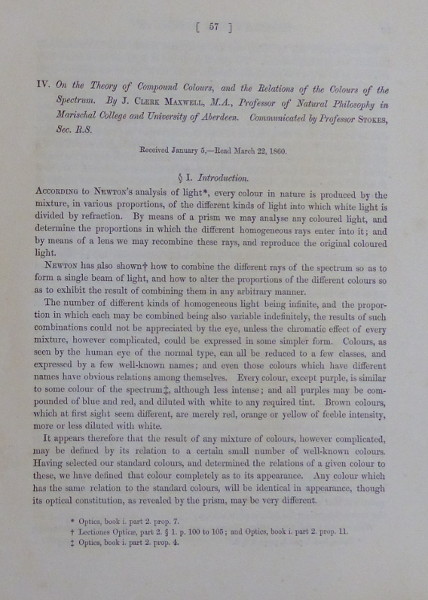On the theory of compound colours, and the relations of the colours of the spectrum, by J. Clerk Maxwell
[1860]
STORE REF FILE 18:10
Although the physicist James Clerk Maxwell (1831-1879) is best known for his electromagnetic theory of light, his earliest work focused on colour, and this remained a central concern throughout his life. The numerous citations of Newton in this article demonstrate his long-lasting influence, but Maxwell also absorbed the works of Thomas Young (1773-1829) and Hermann von Helmholtz (1821-1894) to develop a theory of trichromatic colour vision: this posited 3 types of photoreceptors in the eye, each sensitive to different wavelengths of light, corresponding to red, green and blue on the spectrum. Maxwell exploited this fact to develop the first colour photograph.
In this paper, Maxwell carefully distinguishes between light’s optical properties—how it moves through a medium—and its chromatic properties—how light creates perceptions of colour through the human eye, and attempts to clarify the relationship between them.
Maxwell received the Royal Society’s Rumford Medal in 1860 for this work, an award for “an outstandingly important recent discovery in the field of thermal or optical properties of matter."
Click to see this image enlarged

